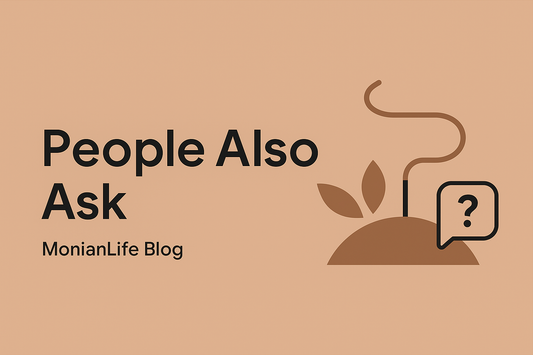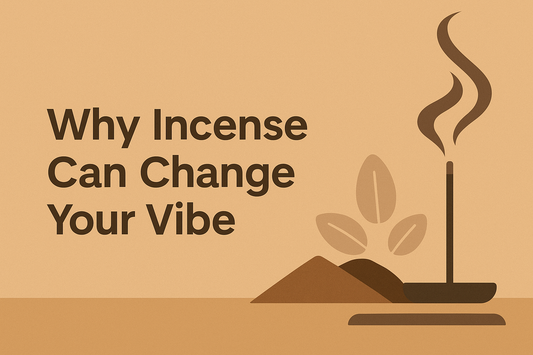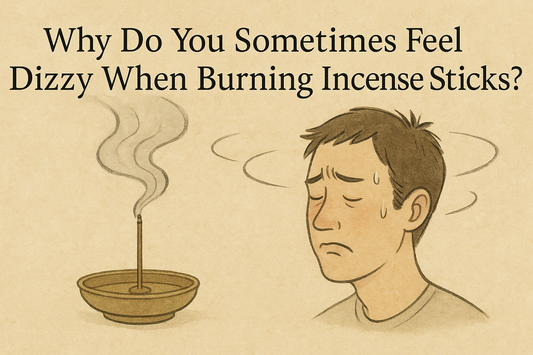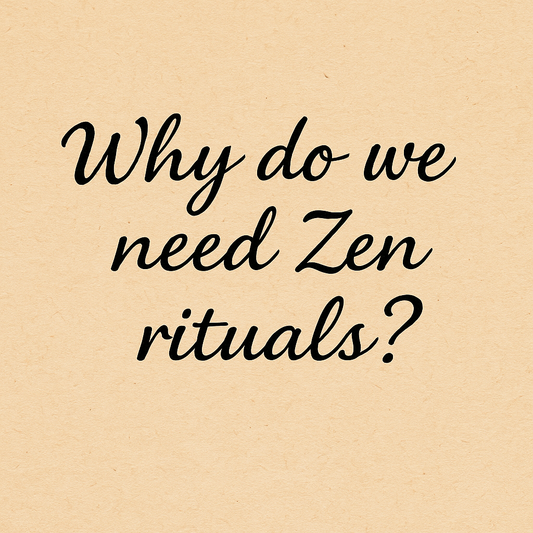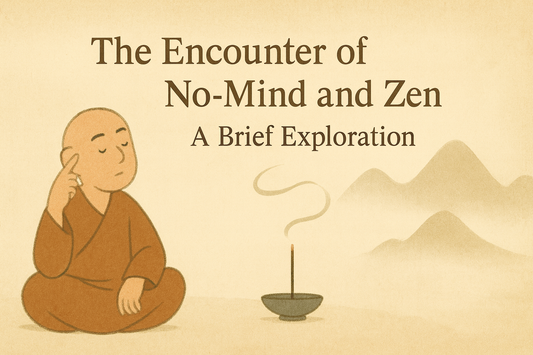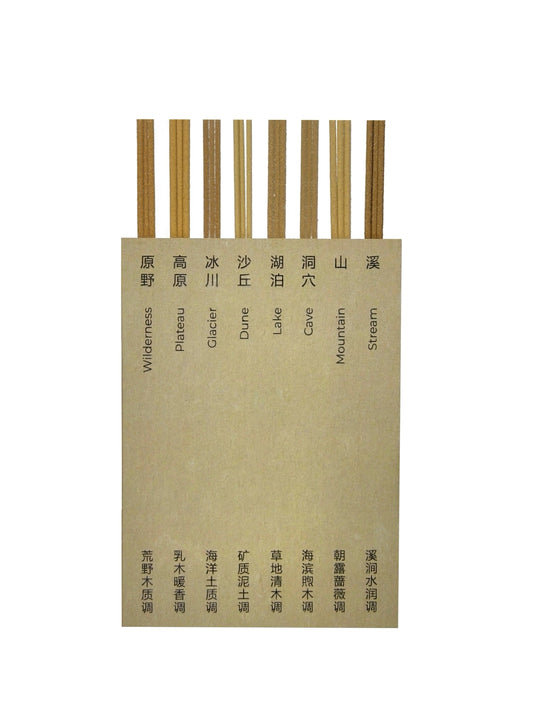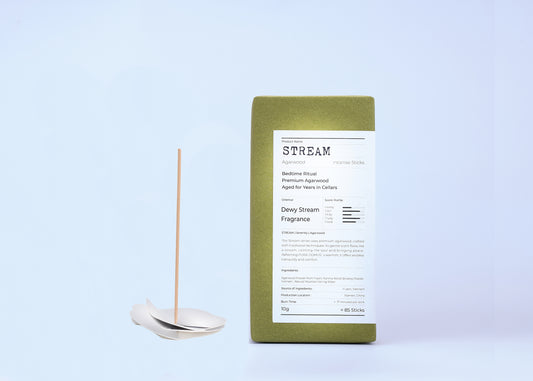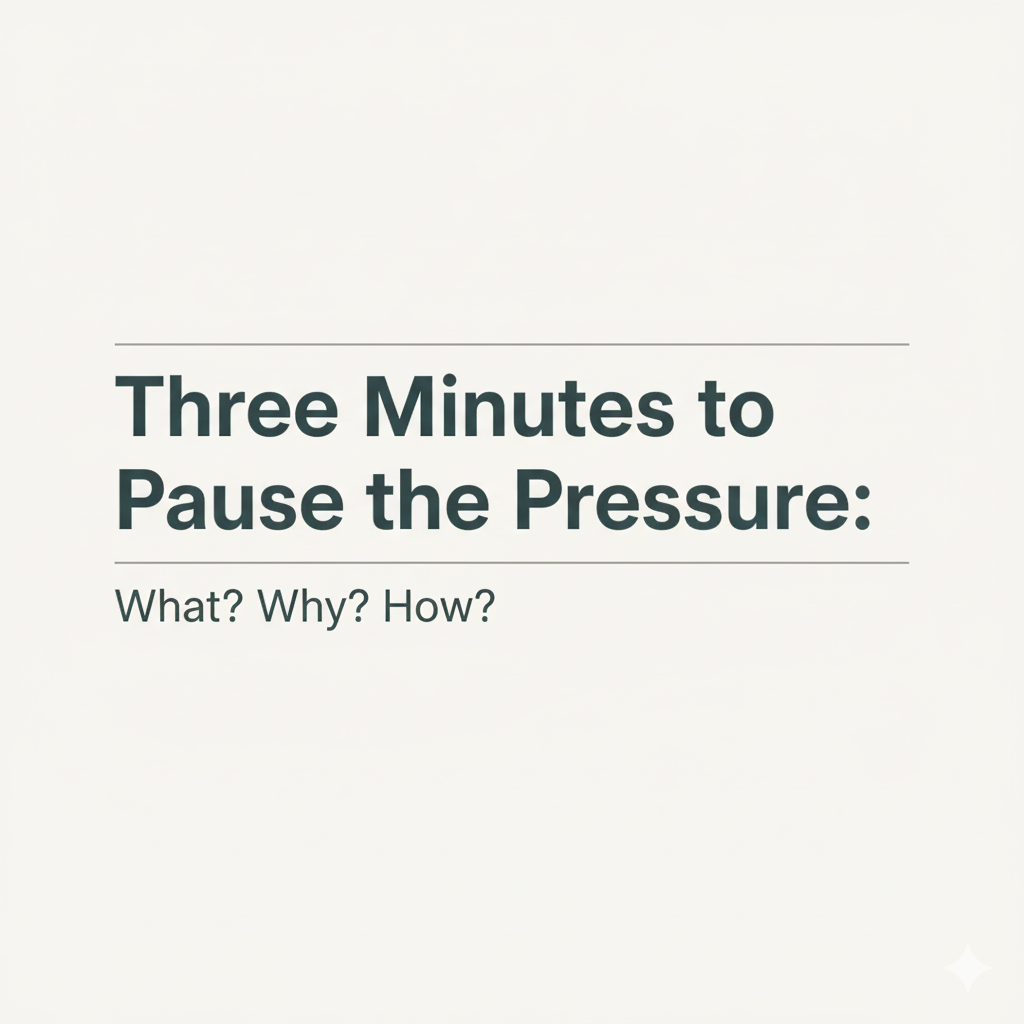
Three Minutes to Pause the Pressure: What?Why?How?
The “Invisible Shackles” of Modern Life: Are You Being “Quietly Pressured”?
In this era of information overload and fast-paced living, we often feel physically and mentally exhausted, yet can’t pinpoint the exact cause. You might think you’re “too fragile,” but the truth is, our environment is systematically amplifying your stress response. These seemingly trivial daily habits are like invisible shackles, eroding our inner peace little by little.
These scenarios are likely all too familiar:
•Your first glance upon waking is your phone: Before you even brush your teeth, you’re hijacked by unread notifications and “You missed X messages.” Your brain’s working memory is seized, and your attention and decision-making abilities are diminished before the day even begins. Even if your phone is just “lying on the table,” its mere presence can impair cognitive performance [1].
•Bombardment by “Breaking — Trending — In-depth” news feeds: Algorithms seem to favor pushing negative and conflict-ridden news, making you unconsciously scroll a little more, leading to what’s known as “doomscrolling” — a behavior that significantly increases the risk of anxiety, depression, and sleep disturbances [2].
•A day constantly interrupted by “fragmentation”: Emails, private messages, and group chats repeatedly strike like “minor earthquakes.” Research shows that frequent interruptions elevate stress levels and reduce focus and productivity [3].
•The emotionalization of public discourse: Annual stress reports indicate that the persistent noise of political and social issues is becoming a collective stressor [4].
These situations are not coincidental; they are part of the fabric of modern society, constantly stimulating our nervous system and keeping it in “alarm mode.” But the good news is, we have a way to bring it back to “regulation mode,” and it might only take three short minutes.

2. Why is the “Three-Minute Breathing Technique” So Effective? Science Reveals Its Secrets
You might wonder if a mere three-minute breathing exercise can bring about such significant changes. The answer is yes, and it’s backed by solid scientific evidence.
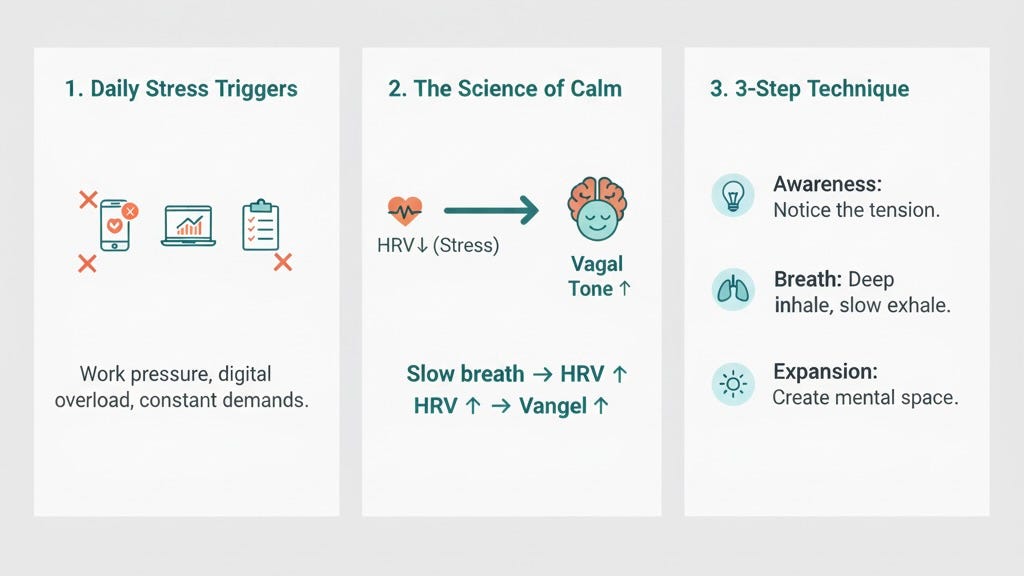
Slow, Steady Breathing Activates the Body’s “Brake System”
Increases Heart Rate Variability (HRV): Slow and steady breathing can significantly increase heart rate variability (HRV) within minutes. HRV is a measure of the variation in time between heartbeats, and high HRV is generally associated with good autonomic nervous system regulation and lower stress levels [5].
Upregulates Vagal Tone: By increasing HRV, slow breathing effectively upregulates vagal tone. The vagus nerve is the primary component of the parasympathetic nervous system, responsible for the body’s “rest and digest” response. When the vagus nerve is active, our body switches from the sympathetic nervous system’s “fight or flight” mode (accelerator) to the parasympathetic nervous system’s “relax and restore” mode (brake) [6].
The “Calming” Effect of Extended Exhalation: Multiple studies and clinical guidelines recommend that “exhalation should be slightly longer than inhalation,” as extended exhalation is particularly effective in “calming” physiological arousal, such as reducing heart rate and skin conductance responses [7].
Significant Effects of Ultra-Short Interventions: Even ultra-short breathing exercises can be effective. Randomized controlled trials show that just 5 minutes a day of structured breathing (like “cyclic sighing”) can reduce anxiety and improve mood faster than an equivalent duration of mindfulness meditation; a single session of deep, slow breathing can also immediately boost parasympathetic indicators and reduce state anxiety [8].
These studies collectively demonstrate that consciously adjusting breathing patterns, especially slow and deep breathing, can directly influence our autonomic nervous system, helping us recover from stress and regain inner peace in a short amount of time.
3. The “Three-Minute Breathing Technique” — Step-by-Step (Beginner-Friendly Version)
This exercise is adapted from the Mindfulness-Based Cognitive Therapy (MBCT) “Three-Minute Breathing Space,” aiming to shift your nervous system from a “tense” to a “regulatable” state. It requires no equipment, no noise, and can be done anytime, anywhere.
Best Times: Before/after checking news, before meetings, when frequently interrupted by messages, or 3 minutes before sleep. Posture: Sit upright, feet flat on the floor, phone screen down.
Minute 0: Preparation (10 seconds)
Gently close your eyes or softly gaze downwards. Silently repeat to yourself: “First quiet, then clear.” This phrase serves as a “start” signal to your brain, letting it know you’re about to enter a different state.
Step 1: Awareness (approx. 45 seconds)
Like an objective reporter, observe your internal experience at this moment:
•What am I doing/facing? (e.g., “I’m checking my phone and feeling a bit annoyed.”)
•What am I feeling? (e.g., “My body feels tense, my thoughts are chaotic, I’m irritated, or I feel empty…”)
The key is to “name, not judge.” The purpose of this step is to untangle the knotted threads of “emotions-body-thoughts” into three clear strands, helping you clearly recognize your current state [9].
Step 2: Breathing (approx. 75 seconds)
Gently bring your attention to your breath, feeling the sensation of air entering and leaving your body:
•Breathing Rhythm: Inhale through your nose, then exhale through your nose or gently pursed lips. Inhale for about 4–5 seconds, and exhale for about 5–6 seconds, ensuring exhalation is slightly longer than inhalation.
•Feel the Breath: Gently place your attention on your nostrils or abdomen, feeling the rise and fall of your body with each breath. Do not try to “control” the movement of your chest and abdomen, but rather “accompany” them as they breathe naturally.
•Gently Return: If your mind starts to wander and you feel distracted, gently bring your attention back to the next inhale. Don’t be hard on yourself; this is normal.
Through this practice, you will likely achieve a “resonant frequency” breathing rate of about 6 breaths per minute, which helps to increase HRV and stabilize emotions [10].
Step 3: Expansion (approx. 60 seconds)
Now, expand your attention from just your breath to the sensations throughout your entire body:
•Body Scan: From your face, shoulders, neck, chest, back, abdomen, all the way down to your legs, feel the state of each part of your body.
•Feel the Sinking: With each exhale, imagine your body gently sinking down by 2%. Let your entire body act as a whole, feeling its rhythm with each breath [9].
Conclusion (10–15 seconds)
Before opening your eyes, quietly listen to the ambient sounds around you. Then, slowly open your eyes and return to your present environment. If you wish, you can light a natural incense stick as an “ending anchor,” allowing the space to remember these 3 minutes of order, which can also help you integrate the practice into your life.
✅ “Faster” Version (60–90 seconds): If you have limited time, you can perform only Step 2, keeping the exhalation slightly longer. This can also effectively reduce physiological arousal [7].
⚠️ Small Tip: If you have asthma, chronic obstructive pulmonary disease, or discomfort during pregnancy, please use a shallower, gentler breathing rhythm. If you experience any discomfort, stop immediately and consult a professional.
4. “Embedding Habits into Scenarios,” Not Just Relying on Willpower
Forming a new habit often requires willpower, but a more effective approach is to integrate it with your existing daily routines, making it a natural part of your life.
•Rule A: Do it once before and after news consumption: Transform “passive scrolling” into “active regulation.” Perform a three-minute breathing exercise before and after checking the news, creating a “buffer zone” for your mind [2].
•Rule B: 3 minutes before meetings: Before important meetings, take three minutes for a breathing exercise to help improve your attention and decision-making abilities [1].
•Rule C: If interrupted by messages ≥3 times, do a round immediately: When you feel constantly interrupted by messages, immediately perform a breathing exercise to reduce the stress response caused by interruptions [3].
5. You Are Not Alone — Let’s Make “Peace” a Skill
Your biases about the world once protected you; your individuality is not “pretence,” but self-boundary. In the Monian community, we use objects and rituals (incense, vessels, tea) to help each other “ground” the practice into daily life:
•Daily check-ins for the “three-minute practice”;
•Share your “anti-noise items” (incense types, tea sets, quiet corners);
•A non-judgmental dialogue space to record the real daily conflicts and resolutions.
May you turn these 3 minutes into a gentle “non-cooperation” with the world. Peace deserves to be valued, and it deserves to be practiced.
If you’re willing, start with your first three-minute round tonight; tomorrow, share it with someone else who’s also struggling to breathe under the weight of news and notifications. We are at Monian, waiting for you to sit down.
References
[1] r.jordan.im. (n.d.). The mere presence of one’s own smartphone reduces available cognitive capacity. Retrieved from https://r.jordan.im/
[2] Harvard Health. (n.d.). Doomscrolling: The effects of negative news on mental health. Retrieved from https://www.health.harvard.edu/blog/doomscrolling-the-effects-of-negative-news-on-mental-health-2020112321304
[3] ics.uci.edu. (n.d.). The cost of interrupted work: More speed and stress. Retrieved from https://ics.uci.edu/~gmark/chi08-mark.pdf
[4] American Psychological Association. (n.d.). Stress in America 2024. Retrieved from https://www.apa.org/news/press/releases/stress/2024/stress-in-america-report
[5] Laborde, S., et al. (2022). Effects of voluntary slow breathing on heart rate and heart rate variability: A systematic review and a meta-analysis. ScienceDirect. Retrieved from https://www.sciencedirect.com/science/article/abs/pii/S0149763422002007
[6] Gerritsen, R. J. S., & Band, G. P. H. (2018). Breath of Life: The Respiratory Vagal Stimulation Model of Contemplative Activity. PMC. Retrieved from https://pmc.ncbi.nlm.nih.gov/articles/PMC6189422/
[7] Balban, M. Y., et al. (2023). Brief structured respiration practices enhance mood and reduce physiological arousal. PMC. Retrieved from https://pmc.ncbi.nlm.nih.gov/articles/PMC9873947/
[8] Magnon, V., et al. (2021). Benefits from one session of deep and slow breathing on vagal tone and anxiety in young and older adults. Nature. Retrieved from https://www.nature.com/articles/s41598-021-98736-9
[9] Mindful. (n.d.). The Three-Minute Breathing Space Practice. Retrieved from https://www.mindful.org/the-three-minute-breathing-space-practice/
[10] Zaccaro, A., et al. (2018). How Breath-Control Can Change Your Life: A Systematic Review on Psycho-Physiological Correlates of Slow Breathing. Frontiers in Human Neuroscience. Retrieved from https://www.frontiersin.org/journals/human-neuroscience/articles/10.3389/fnhum.2018.00353/full


